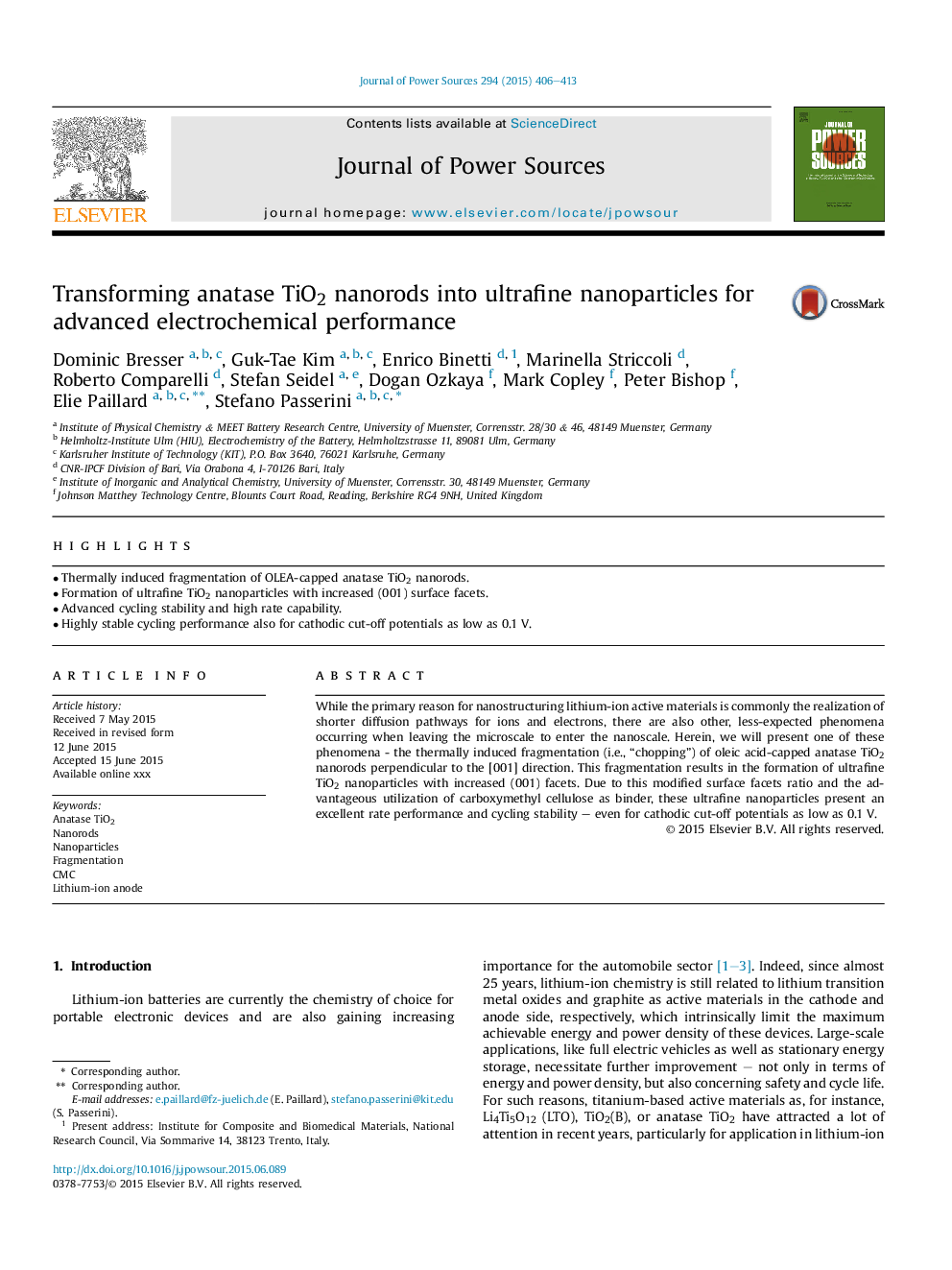| Article ID | Journal | Published Year | Pages | File Type |
|---|---|---|---|---|
| 7731263 | Journal of Power Sources | 2015 | 8 Pages |
Abstract
While the primary reason for nanostructuring lithium-ion active materials is commonly the realization of shorter diffusion pathways for ions and electrons, there are also other, less-expected phenomena occurring when leaving the microscale to enter the nanoscale. Herein, we will present one of these phenomena - the thermally induced fragmentation (i.e., “chopping”) of oleic acid-capped anatase TiO2 nanorods perpendicular to the [001] direction. This fragmentation results in the formation of ultrafine TiO2 nanoparticles with increased (001) facets. Due to this modified surface facets ratio and the advantageous utilization of carboxymethyl cellulose as binder, these ultrafine nanoparticles present an excellent rate performance and cycling stability - even for cathodic cut-off potentials as low as 0.1Â V.
Related Topics
Physical Sciences and Engineering
Chemistry
Electrochemistry
Authors
Dominic Bresser, Guk-Tae Kim, Enrico Binetti, Marinella Striccoli, Roberto Comparelli, Stefan Seidel, Dogan Ozkaya, Mark Copley, Peter Bishop, Elie Paillard, Stefano Passerini,
